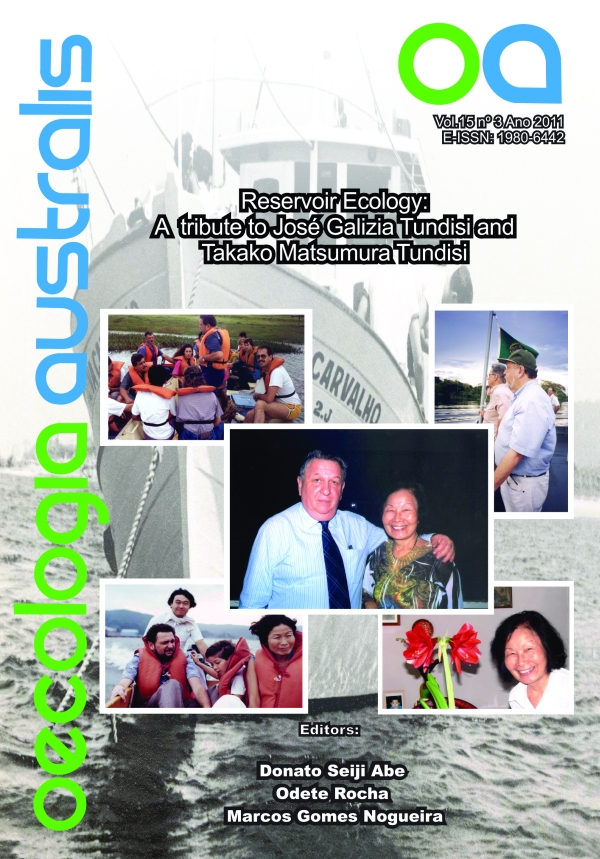DINÁMICA ESPACIO-TEMPORAL DE CUATRO ESPECIES DE STAURASTRUM (MEYEN 1829, EMEND. RALFS 1848) EN UN EMBALSE EUTRÓFICO COLOMBIANO
Keywords:
Colombia, embalse tropical, dinámica espacio-temporal, Staurastrum spp., atelomixisAbstract
SPATIO-TEMPORAL DYNAMICS Of fOUR SPECIES Of Staurastrum (Meyen 1829, emend. Ralfs 1848) IN A COLOMbIAN EUTROPHIC RESERVOIR. Dynamics of four species of Staurastrum (Meyen 1829, emend. Ralfs 1848) in Riogrande II reservoir (6 º 35 ‘57'' - 6 ° 28' 79''N; 75° 32 ‘17'' - 75 º 25' 85''W) in the spatial and temporal scales were carried out. Sampling stations were five: Dam, Río Grande downstream, Río Chico downstream, Río Chico upstream and Ánimas. Samples were taken every ten days between July 2002 and July 2003. Staurastrum is a characteristic desmid of oligotrophic environments with low pH; however, the reservoir evaluated is an eutrophic one. The most abundant and widely distributed was S. paradoxum. The results show that these four species were highly dynamic over time (CV> 100%) and contagiously distributed in space up to the most eutrophic station (Río Chico upstream), mainly S. gracile (k mean = 2). S. paradoxum showed a very small similarity value (0.18) with respect to the group formed by S. gracile, S. tetracerum and S. longipes. Free CO2 (R = 0.83), rainfall (R = 0.62) and chlorophyll a (R = 0.58) impacted positively on the ecology of the species studied; and negatively light gradient (R = - 0.68). None of the forms of nutrients considered was significantly associated with changes in their densities. The behavior of species is explained by Harris? non-equilibrium theory' where environmental stochasticity makes less severe the competition between them. The driving force behind the dynamics of these desmids is the partial atelomixis which allows these algae to stay suspended in the water column. They formed two groups of species with mixed ecological strategies to use the environment: first, S. gracile, was classified as a transitional form strategist R-S, better adapted to more eutrophic stations (Rio Chico and Rio Grande), while the triad S. longipes-S. paradoxum-S. tetracerum adjusted more to the C-S transitional strategy.
Keywords: Colombia; tropical reservoir; space-temporal dynamics; Staurastrum spp.; Atelomixis.


